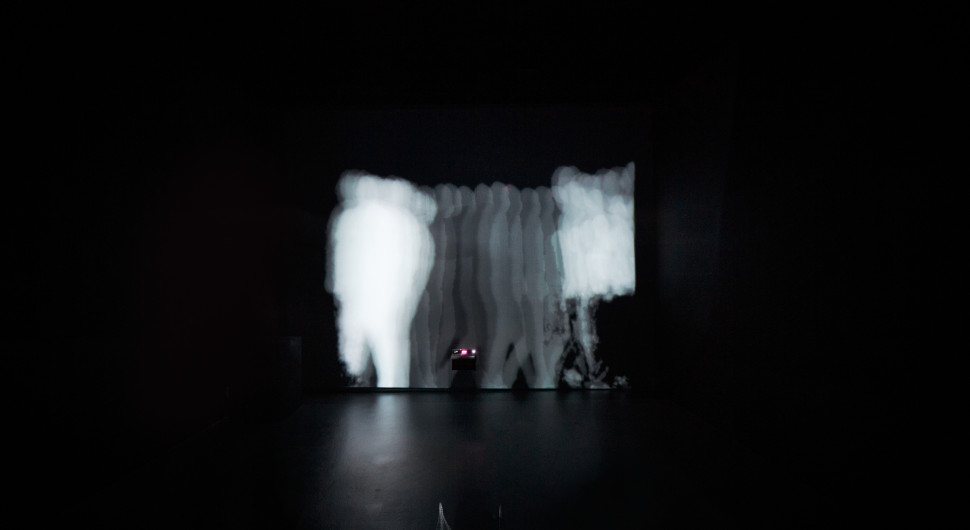Sari Al Taher
Terra Incgonitae is an interactive and immersive installation that explores metaphysical themes of the mind & body. Although the mind is inextricably linked to the body, the body can sometimes feel a few steps behind. The installation separates the body and transfers it as a shadow clone of theself. It is an imperfect vessel that slows down and gradually delays. It starts to fall short of what the viewer expects it to do. For others, it may feel that the vessel is faulty- feeling as if your movements are not within your control. The viewers grapple with the disconnect between their minds and the world around them. Our minds have moved so far forward that we feel as though we are experiencing the world trapped within uncomfortable containers.

Sari Al Taher’s Terra Incognitae immersive room may feel uncomfortable for some visitors. Only one person at a time is allowed into his immersive room, which is lit by a singular spotlight that follows you around like a panopticon (or centralized system of surveillance). When the light fades, you are faced with just your own lagging shadow. Out of sync, you become disconnected from your silhouette, which gestures in slow motion.
Al Taher’s title evokes the unknown landscapes of the mind, or the subconscious, as well as Carl Jung’s writings on the shadow self. Originally inspired by Haruki Murakami’s novel, Kafka on the Shore, Al Taher moved away from the genre of magical realism and the idea of creating fictional landscapes drawing from mind palaces and 3D animations. Instead, he stripped his installation from all identifiers except the viewer’s shadow to create an isolationist experience.
The shadow itself becomes material; one’s black mirror in the physical world. It marks the absence of light until the room becomes pitch black, signifying the end of the experience. Although Terra Incognitae offers no solutions – it’s up to the participant to make sense of it, it does point to a universal human condition of aloneness.
Sari Al Taher is Palestinian/Filipino artist. His practice involves creating interactive, spatial, and sensory experiences focused on the human being using contemporary tools. In the service of timeless poetry and metaphysical themes, he integrates code and generative algorithms combined with visual sensibilities to create unique personal moments of reflection. He reflects upon the ephemeral, the transitory, and the intangible. Uniting two elements, the anthropocentric sphere and the pleasures of dreams and imagination.
